When I started ruminating in 2016 over the apparent differences between populations that kept the two-velar distinction of Indo-Tocharian, and the only two unrelated dialectal groups that showed a strong satemization trend, I believed that – much like in modern times – there would be no clear-cut division in terms of ancestry or Y-DNA haplogroups between neighbouring forest-steppe and steppe populations.
The answer to the question of interacting ethnolinguistic groups had to lie, as everything else, on the investigation of fine-scale population movements that must have put Uralic-speaking peoples as the main substratum of Balto-Slavic and Indo-Iranian.
Still, from the few samples available in 2016, the prehistoric picture seemed quite homogeneous, with an R1b-rich Yamnaya cluster expanding later as Bell Beakers, different from the R1a-rich Corded Ware cluster. With time, it has become clear that this simplistic picture was not an artifact, a consequence of the limited sampling and poorly understood formal stats, but that it actually corresponded nicely to the overall situation at the turn of the 4th millennium BC.
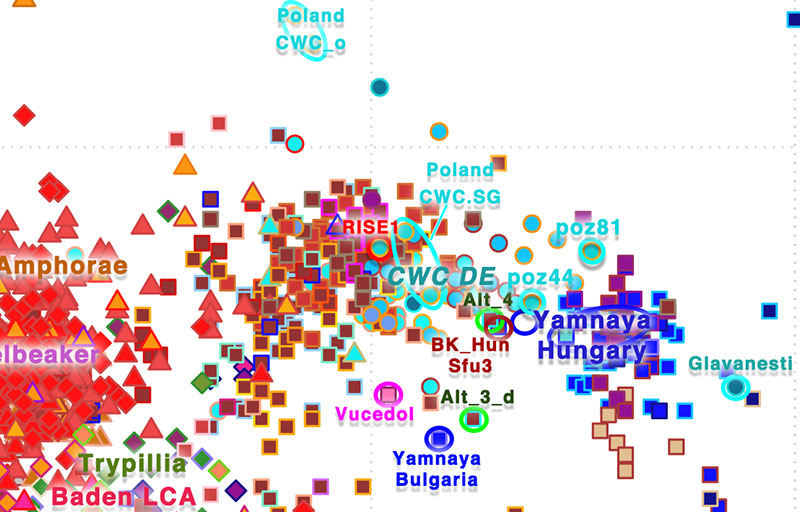
The only sample that became more and more unlikely, in the sausage fest of more or less distant patrilineal relatives that we are constantly seeing during migration events, from the Palaeolithic to the Bronze Age, was a Y-DNA anomaly, RISE1.SG, described in Allentoft et al. (2015) supplementary materials simply as follows:
The Y-chromosome haplogroup of RISE1.SG can be inferred to be R1b1-L754(xV88):
It could be some rare R1b-V2219 subclade of the North Pontic area that thrived with the Proto-Corded Ware expansion, or maybe some local FBC-related R1b-V2219 or sub-Neolithic R1b-P297 lineage that (like many others) resurged among late Corded Ware groups, but its ancestry suggests it might be a Yamnaya-related R1b-L23 subclade. Recent reports haven’t shown any other similar haplogroup among early R1a-rich Corded Ware groups, barring the late Catacomb-related Niche-grave newcomers and their northern influence.
The definitive answer to this phylogeographical improbability came with the retesting and careful handling of the samples by Malmström et al. (2019):
The CWC grave in Obłaczkowo was unearthed in the course of rescue excavations carried out between 2006 and 2008 by Henryk Klunder’s Pracownia Archeologiczno-Konserwatorska and supervised by Paweł Pawlak. The grave was located on a top of a small hill and no traces of a burial mound were found. It was rectangular in shape (2,4-2,5 x 1,9-2,15 m x 0,44 m) and oriented along the N-S axis. It contained skeletal remains of two adult individuals and one child, all buried in contracted position on a side. The grave offerings included a battle-axe and decorated antler plates (Pawlak 2013). The grave belongs to the oldest stage of a small regional CWC group, covering the regions of Wielkopolska and Kujawy and known for ca. 40 burials (Pospieszny 2009).
- poz44: An almost complete although fragmented skeleton of a child (feature E8-A*). AMS radiocarbon dated to 2870-2580 cal BCE (95.4%) (table 1, table S1, Supplementary Section Radiocarbon dating and stable isotope analyses). Two mandibular teeth (I2 and C) and the petrous portion of the temporal bone were sampled for DNA.
*We note that RISE1 (Allentoft et al. 2015) is also described as the individual from Obłaczkowo feature E8-A. However, their genetic results differ from ours. They present this individual as a molecularly determined male that belongs to Ychromosomal haplogroup (hg) R1b and to mtDNA hg K1b1a1 (Allentoft et al. 2015) while our results show this individual to be female, carrying a mtDNA hg U3a’c profile (table 1, table 6 S4). We have backtracked all our handling of this sample and are therefore sure that we present data belonging to the child from Obłaczkowo feature E8-A.
- poz81: An incomplete skeleton of an adult (feature E8-B). AMS radiocarbon dated to 2880-2630 cal BCE (95.4%) (table 1, tableS1, Supplementary Section Radiocarbon dating and stable isotope analyses). A phalange and the petrous portion of the temporal bone were sampled for DNA.
The description of the grave and the two sampled individuals, together with their ancestry, Y-DNA and mtDNA haplogroups, show that RISE1.SG was not part of the same burial and/or age.
The sample seems to be an ancient one, since it passes the tests of the Reich Lab’s curated dataset, and it doesn’t look exactly like modern local ones…assuming it is from Obłaczkowo or surrounding Kuyavia/Greater Poland, and not from some other distant researched area.
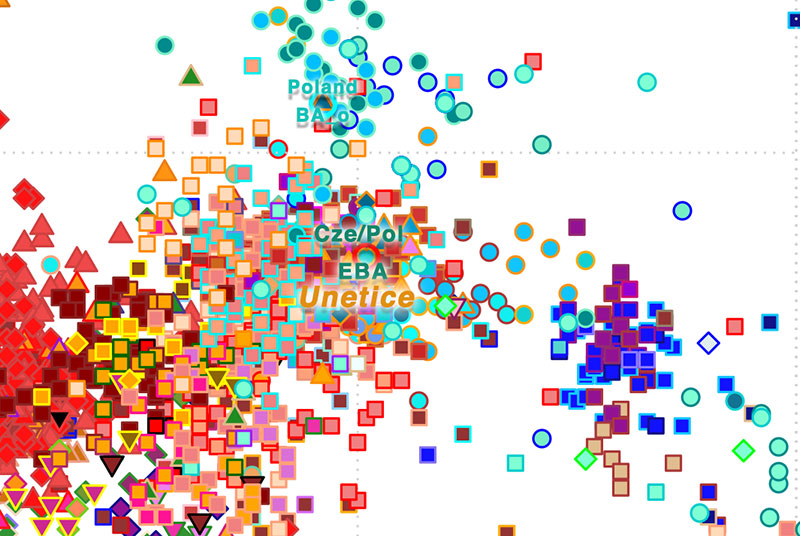
It is impossible to ascertain its true archaeological origin with formal stats, but I still wanted to play around with the new release of ADMIXTOOLS (v.7.0) and qpfstats before a correction is published, to test whether it is of any use at all.
In order to obtain comparable results, it seemed to me that the most conservative approach includes using only shotgun-sequenced samples and one-way admixture models. This simplistic assessment disregards any potential local or non-local admixture, and is thus only relevant to see which of the available populations might be closest to the actual best proxy:
NOTES. The R package admixtools published by Robert Maier together with this new version 7.0 seems to be still in development, needing a lot of polishing before it can be used to improve the pipeline with the usual merged popgen dataset. This means I had to come back to using manually prepared documents and batch scripts, which seems like a huge step backwards, now that the admixr package was becoming more “qpAdm_rotation”- and user-oriented…
I wanted to test both, the old qpAdm with “allsnps: yes” and the new qpfstats, so I used admixr for the former. The Google Drive folders in the link above show the results for both analyses, and they are indeed different. Apparently, the new F2 helps reject models more easily, which is greatly appreciated. For comparison, here are the models for the Althäuser male from CWC and Bell Beaker – which show fits reasonably similar to my previous two-way models, and (interestingly) rejects a one-way model from either CWC_DEU or BBC_HUN.
All models have the same combination of outgroups that I used for my last models comparing CWC vs. BBC, which seemed to be good enough to reject some source populations among similar Steppe-related ones, although I haven’t really looked in more detail which of the references could be deleted and still obtain good (or better) results. And I won’t do it in this case, either, especially not without some efficient way to test dozens or hundreds of models. That’s about what a weekend (and my interest in this individual) can offer. Feel free to comment on errors, alternatives, etc. below.
Late Corded Ware samples from Poland (of hg. I2-L801*), and especially Czech Bell Beakers (rich in hg. R1b-L23) seem potential proxies, which makes RISE1.SG a good candidate for the first East Bell Beaker-derived individual sampled from the North-Eastern EEBA Province, or a directly related Early Bronze Age population.
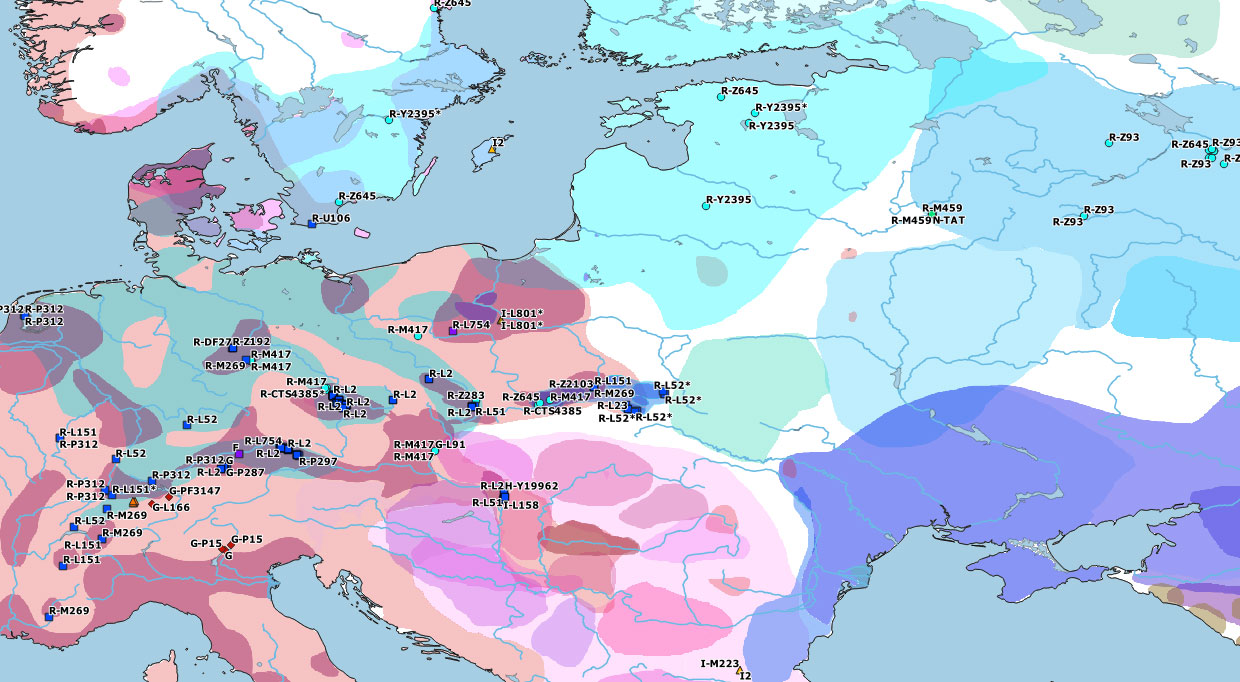
Whereas samples from BBC-derived (Proto-)Únětice in Poland don’t seem to be far from a good enough proxy, other populations like Corded Ware from Germany (of hg. R1a-CTS4385), the eastern Poland EBA sample from Gustorzyn (of hg. R1a-Z280) or Hallstatt Bylany have to be rejected, which – in combination with the good fit for Czech Bell Beakers – suggests that RISE1 might have formed part of a BBC-derived Bronze Age population, hence at the core of the Balto-Slavic expansion.
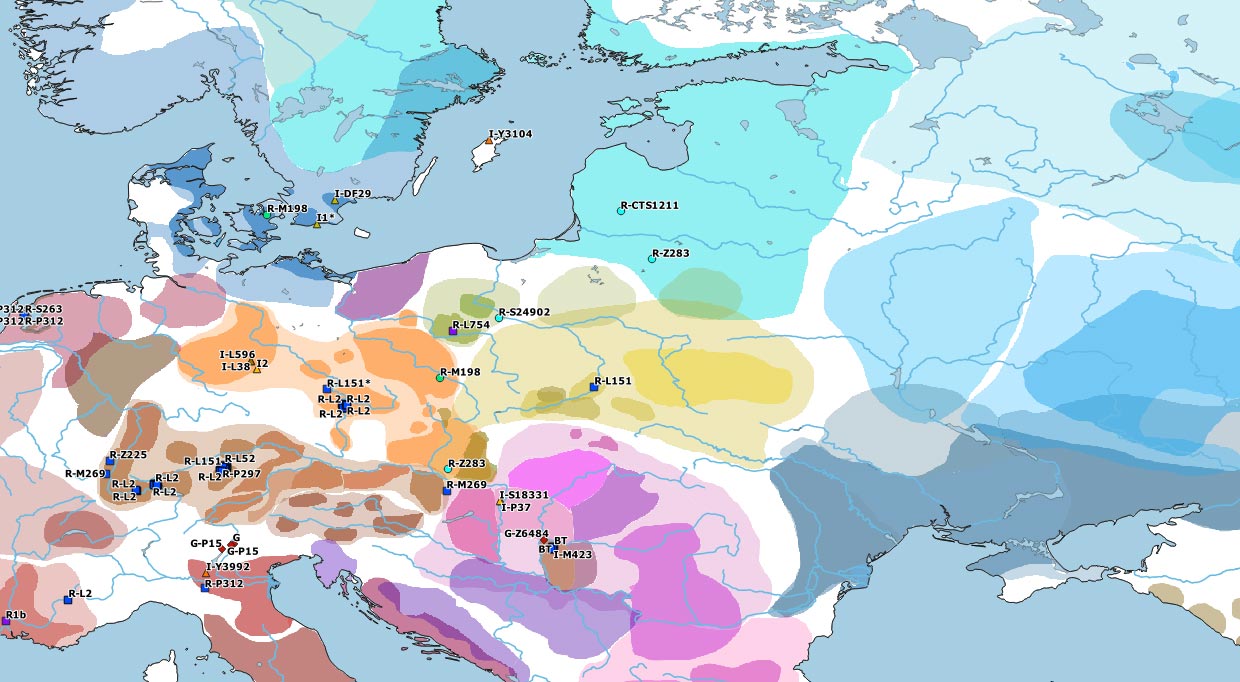
Medieval Vikings from Sigtuna can’t be rejected, either, but they form such a wide cluster with foreign influences that it is difficult to say if this could actually be an ancestry derived from the Migration Period, like the majority of medieval samples from Poland known to date. In that case – including it being an Early West Slav from Poland – it would be mostly interesting for its ancestry, because haplogroup-wise it would not contrast with many other already available samples…
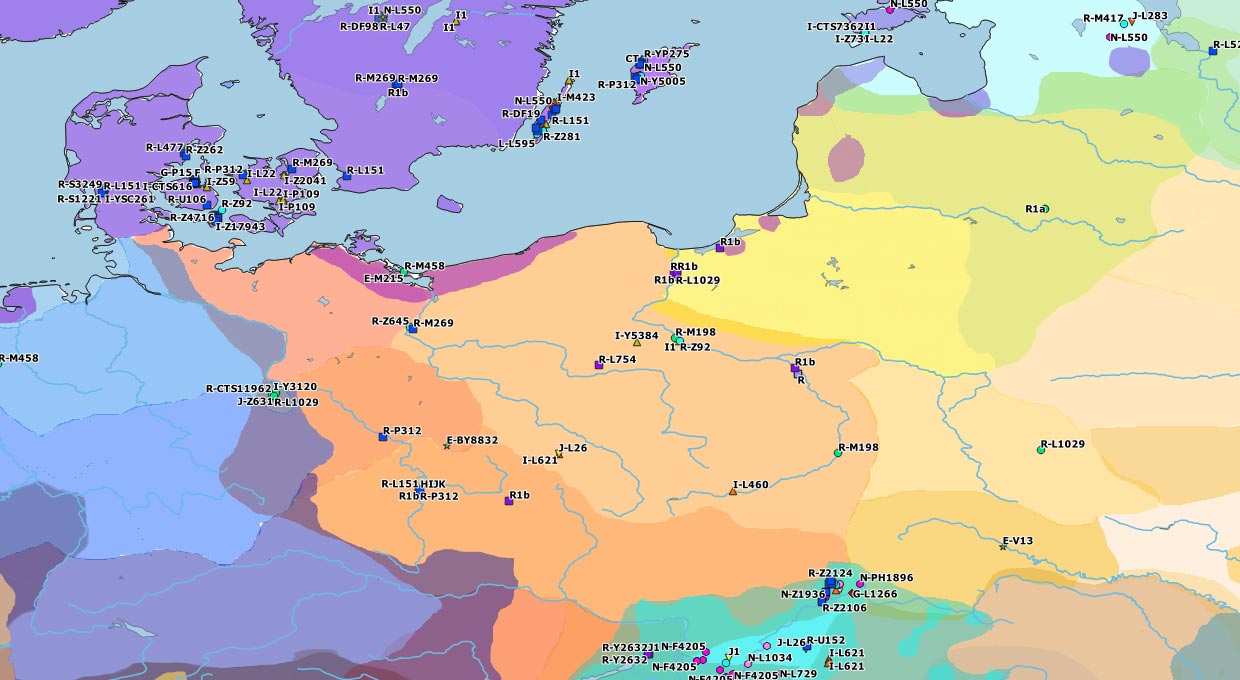
The most likely explanation for these findings is that, akin to the Czech Corded Ware individuals that turned out to be Early Slavs, this sample was mistracked by the Copenhagen lab. Whether it is from the Bell Beaker, Bronze Age, Iron Age, Germanic or Slavic period is impossible to say without access to a list of samples investigated during the preparation of Allentoft et al. (2015).
What is evident, yet again, is that the finding of an R1b individual in a Corded Ware context, although not impossible, should always raise a red flag.
In fact, from what we know about the continuity bias of the Copenhagen lab when it comes to the Single Grave culture and the Nordic Late Neolithic, I reckon that their future paper might turn out to be the perfect playground to use formal stats and Y-DNA to distinguish which samples were actually mislabelled and/or misdated Bell Beaker-related ones.
Related
- qpAdm best practices and common pitfalls
- Survival of hunter-gatherer ancestry in West-Central European Neolithic
- Indo-Iranian influence on West Uralic through the Catacomb culture
- mtDNA, lactase persistence, and admixr for ADMIXTOOLS
- “Steppe ancestry” step by step (2019): Mesolithic to Early Bronze Age Eurasia
- Bell Beakers and Mycenaeans from Yamnaya; Corded Ware from the forest steppe
- Early arrival of Steppe ancestry in Switzerland
- Fully Steppe-like Proto-Corded Ware Late Trypillians
- “Steppe ancestry” step by step (2019): Mesolithic to Early Bronze Age Eurasia
- On the Ukraine Eneolithic outlier I6561 from Alexandria
- Yamnaya replaced Europeans, but admixed heavily as they spread to Asia
